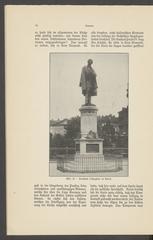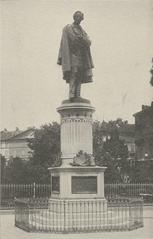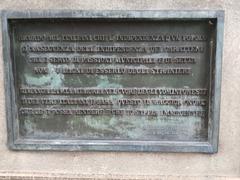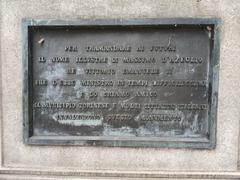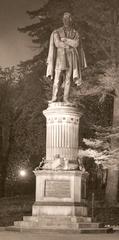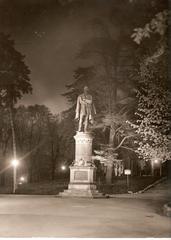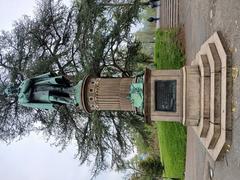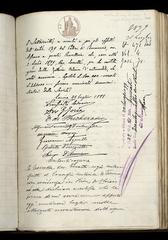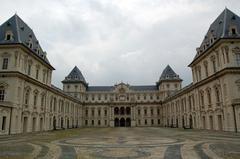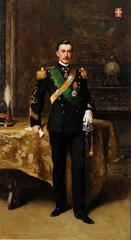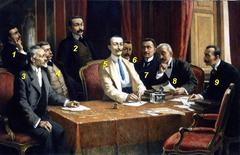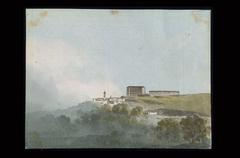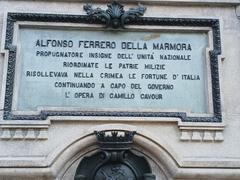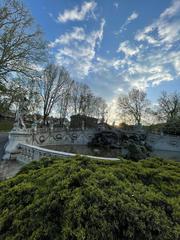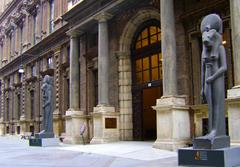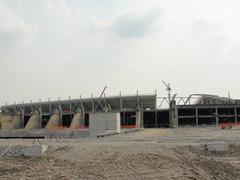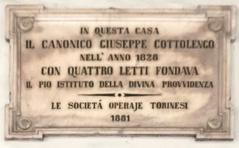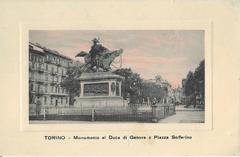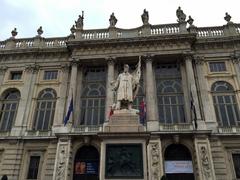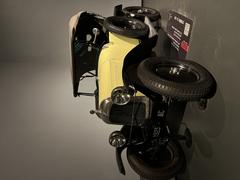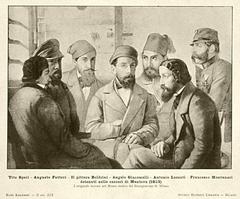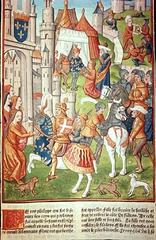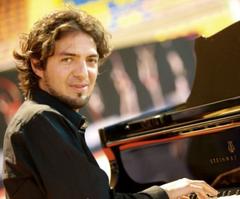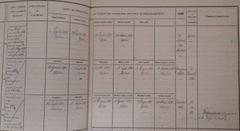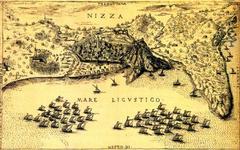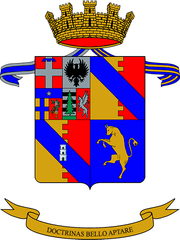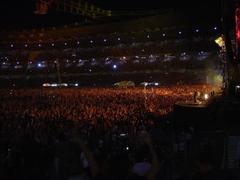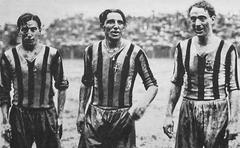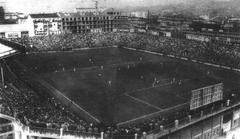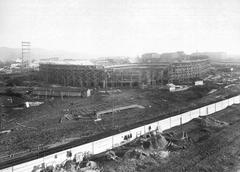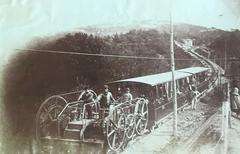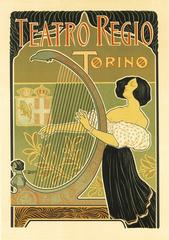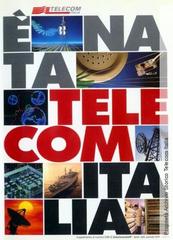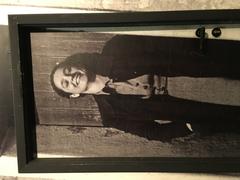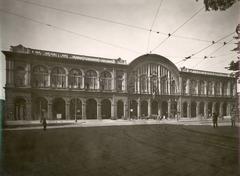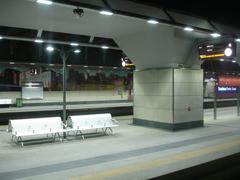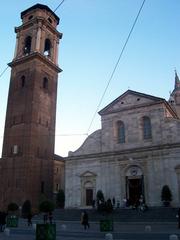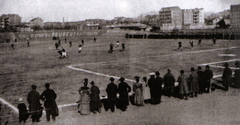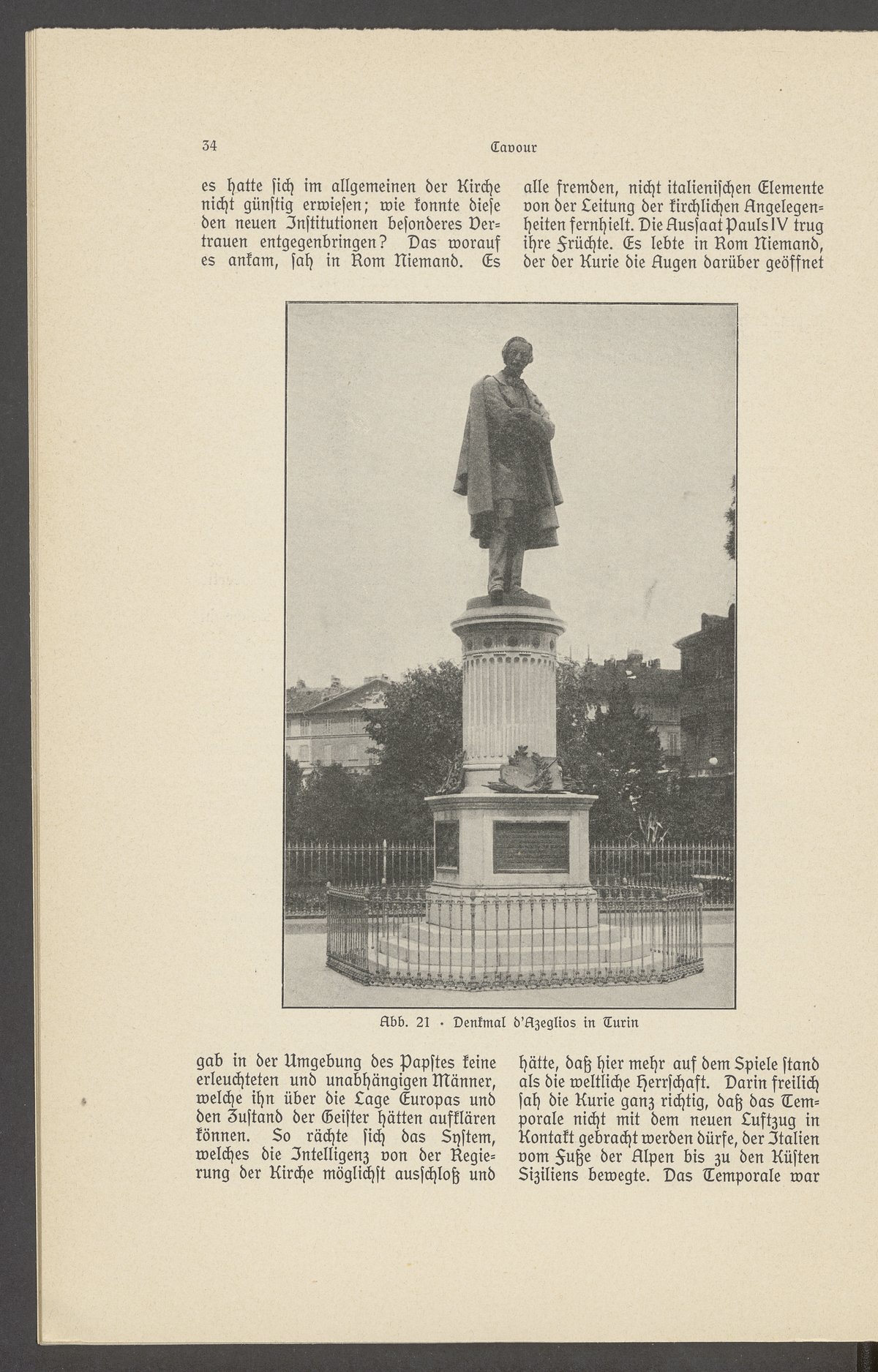
Visiting the Monument to Massimo D’Azeglio in Turin, Italy: Tickets, Hours, and Tips
Date: 14/06/2025
Introduction
Nestled in the tranquil Parco del Valentino, the Monument to Massimo D’Azeglio is a distinguished landmark honoring one of the most influential figures of the Italian Risorgimento. Massimo Taparelli, Marquess of Azeglio, was a statesman, writer, and artist whose vision and reforms played a pivotal role in the unification of Italy. This comprehensive guide delves into the monument’s history, artistic features, visitor information, accessibility, nearby attractions, and practical travel tips—ensuring you make the most of your visit to this important Turin historical site (Wikipedia, ITA Travel, IGotoWorld).
Table of Contents
- Origins and Historical Context
- Massimo D’Azeglio: Life and Achievements
- The Monument: Symbolism and Artistic Features
- Visiting Information: Hours, Tickets, Accessibility
- Getting There and Transport Options
- Nearby Attractions
- Practical Travel Tips
- Frequently Asked Questions (FAQ)
- Conclusion
- Sources and Further Reading
Origins and Historical Context
Following Massimo d’Azeglio’s death in 1866, Turin’s civic leaders sought to commemorate his legacy with a monument reflecting his enduring impact on Italian politics, culture, and art (Wikipedia). Fundraising for the project began in 1867, and renowned sculptor Alfonso Balzico was commissioned. Completed over six years, the monument was inaugurated on November 9, 1873, originally located in the Sambuy Gardens at Piazza Carlo Felice. In 1936, it was relocated to its current setting in Parco del Valentino, anchoring its legacy among Turin’s iconic landmarks (IGotoWorld).
Massimo D’Azeglio: Life and Achievements
Early Life and Artistic Pursuits
Born into a noble Piedmontese family in 1798, D’Azeglio’s early life was steeped in the cultural and intellectual circles of Turin. Initially pursuing a military career, he soon dedicated himself to the arts, studying painting in Rome and exhibiting works in cities like Turin and Naples. His historical paintings and literary works—most notably the novel “Ettore Fieramosca” (1833)—helped shape early Italian national consciousness (Associazione Culturale Angelo Gilardino).
Political Career and the Risorgimento
D’Azeglio emerged as a key political figure during the Risorgimento, advocating for liberal reforms and Italian unification. He fought in the First War of Independence and served as Prime Minister of the Kingdom of Sardinia (1849–1852), introducing reforms such as the Siccardi Laws to limit the church’s temporal power. His diplomatic efforts helped build alliances with France and England, and his invitation to Camillo Benso, Count of Cavour, to join the government proved crucial for Italian unification (Britannica).
Cultural Legacy
Beyond politics, D’Azeglio was a prolific writer and cultural leader. His memoir, “I miei ricordi,” is a valuable account of 19th-century Italy. As director of the Royal Art Gallery in Turin, he contributed significantly to the city’s artistic scene. His legacy is further honored by institutions such as the Liceo Classico Massimo d’Azeglio, renowned for its distinguished alumni (Wikipedia).
The Monument: Symbolism and Artistic Features
Standing nine meters tall, the Monument to Massimo D’Azeglio is crafted from red granite and bronze, symbolizing strength and dignity (Wannenes Group). The full-length bronze statue depicts D’Azeglio in contemplative pose, draped in a long coat, embodying his artistic sensibility and political determination. The granite pedestal is adorned with four bronze bas-reliefs illustrating defining moments, including the Battle of Vicenza and the Proclamation of Moncalieri, as well as allegories of his artistic and literary accomplishments (IGotoWorld).
Its setting within Parco del Valentino—amidst fountains, gardens, and other sculptures—makes the monument not just a tribute, but a harmonious part of Turin’s artistic and historical landscape.
Visiting Information: Hours, Tickets, Accessibility
Opening Hours
The monument is located in Parco del Valentino, which is open year-round from early morning (typically 6:30 or 7:00 AM) until evening (around 9:30 PM or sunset, depending on the season). As an outdoor monument, it is accessible during all park hours.
Tickets and Admission
Visiting the Monument to Massimo D’Azeglio is free of charge; no tickets or reservations are required.
Accessibility
- Paths: Paved walkways and gentle slopes make the area accessible for wheelchair users and those with limited mobility.
- Rest Areas: Benches are available nearby for rest and contemplation.
- Public Facilities: Restrooms and cafés are available in the park and nearby San Salvario district.
For detailed accessibility information, Turin’s infrastructure improvements and accessible public transport ensure that visitors with disabilities can navigate comfortably (aboutturin.com, Trenitalia).
Getting There and Transport Options
- Location: Parco del Valentino, at the intersection of Corso Vittorio Emanuele II and Corso Massimo d’Azeglio.
- Public Transport: Accessible by trams 7, 9, 16CD, 16CS and buses 24, 33, 52, 93 (stop: Massimo d’Azeglio).
- Rail: Torino Porta Nuova railway station is about 1.5 km away (15–20 minutes on foot).
- Bike: Turin’s bike-sharing schemes and dedicated lanes make cycling to the park easy.
- Car: Limited street parking and public garages are available nearby, but arrive early during peak hours.
Nearby Attractions
Enhance your visit by exploring these highlights within and around Parco del Valentino:
- Castello del Valentino: A UNESCO World Heritage site, home to the Polytechnic University’s Faculty of Architecture.
- Borgo Medievale: A recreated 13th-century Piedmontese village complete with artisan workshops.
- Fontana dei Dodici Mesi: Ornate fountain representing the months of the year and local rivers.
- Giardino Roccioso: A romantic rock garden, ideal for strolls and photography.
- Piazza Castello: Turin’s cultural heart, surrounded by historic palaces.
- Mole Antonelliana and National Museum of Cinema: Iconic city landmark offering panoramic views.
- Museo Egizio: One of the world’s leading Egyptian museums.
Practical Travel Tips
- Best Times: Early morning and late afternoon for optimal light and fewer crowds.
- Weather: Turin has a temperate climate; dress appropriately and bring rain gear in spring/autumn.
- Safety: The area is well-patrolled and safe; standard urban precautions apply.
- Language: Italian is spoken, but English is widely understood at tourist sites.
- Dining: Numerous cafés and kiosks are found in the park and San Salvario district. Picnicking is popular on the park’s lawns.
- Events: Parco del Valentino hosts seasonal festivals and concerts; check local listings for details.
- Accommodation: San Salvario and the city center offer diverse lodging options.
- Tourist Savings: Consider the Torino+Piemonte Card for discounts on attractions and public transit.
Frequently Asked Questions (FAQ)
Q: Are tickets required to visit the Monument to Massimo D’Azeglio?
A: No, the monument is freely accessible with no tickets needed.
Q: What are the monument’s opening hours?
A: The monument is open during Parco del Valentino’s hours—generally from early morning to sunset.
Q: Is the monument wheelchair accessible?
A: Yes, paved paths and gentle grades provide easy access.
Q: Are guided tours available?
A: While there are no dedicated tours for the monument alone, it is included in some guided walking tours and self-guided audio tours of Turin’s historical sites (Eventbrite: Turin Audio Tour).
Q: What are the best nearby attractions?
A: Castello del Valentino, Borgo Medievale, and Museo Egizio are all top recommendations.
Conclusion
The Monument to Massimo D’Azeglio is a profound symbol of Turin’s cultural and political contributions to modern Italy. Its accessible location in Parco del Valentino, free entry, and proximity to other historical and natural attractions make it a must-visit for anyone exploring Turin. Whether you are interested in Italian history, art, or simply looking for a beautiful spot to relax, this monument offers a meaningful and enriching experience.
To enhance your visit, consider downloading the Audiala app for real-time updates, guided tours, and insider tips. For more travel inspiration and planning support, follow us on social media and explore related articles on Turin’s historical sites.
Sources and Further Reading
- Massimo D’Azeglio, Wikipedia
- Turin: A City with French Features, ITA Travel
- Monument to Massimo d’Azeglio, IGotoWorld
- The Multi-Faceted Nature of Massimo D’Azeglio, Wannenes Group
- Massimo Taparelli d’Azeglio Biography, Associazione Culturale Angelo Gilardino
- Massimo Taparelli Marchese d’Azeglio, Britannica
